Turn sunlight into savings: Why solar is South Africa’s most profitable business investment
Turn sunlight into savings with RenEnergy’s smart solar investments
Leading businesses understand on-site solar electricity production and storage is a strategic asset that protects their margins, stabilises operations and strengthens sustainability credentials. With Eskom tariffs rising, carbon costs firming, rooftop and car park solar production potential remains significantly underused. The question has shifted from “why solar” to “how quickly can we deploy it, and how do we maximise the return”.
The investment case in 2025: three forces you cannot ignore
Electricity price pressure is structural, not cyclical.
South Africa’s electricity price pressure is structural, not cyclical. NERSA approved an average Eskom tariff increase of ~12.7% for 2025/26, with NERSA indicating 5.36% and 6.19% for the two years after that. In reality, many customers pay far more than the headline number: from our review of actual Eskom accounts, several clients saw 28%–50% year-on-year bill increases, driven by rising fixed/capacity charges (service fees, kVA charges, demand and admin line items) and tariff design - independent of kWh usage.Based on previous adjustment cycles, it’s also unlikely that future hikes will land as low as 5.36% and 6.19%, given RCA claw-backs, primary energy costs, and municipal pass-throughs that tend to push effective bills higher than guidance.
Solar PV is a practical hedge: it displaces daytime energy at a predictable levelised cost over 20–25 years. Whether owned or via a CPI-linked PPA, PV flattens the cost curve, cuts energy charges, and - when paired with storage and tariff optimisation - can reduce demand-related costs. Bottom line: treating the “average” increase as your exposure is risky; on-site PV restores cost visibility and lowers the blended cost of electricity.
The tax landscape has moved, the case still stands.
SARS promotes investment into Renewable Energy through the standard accelerated allowances. Clause 12B increases the already attractive after-tax returns of a well-designed commercial solar system. The temporary 125% “super-deduction” (s12BA) applied only to new and unused renewable assets first brought into use 1 Mar 2023–28 Feb 2025 - that window is now closed. However, section 12B still provides accelerated allowances for qualifying renewables: typically, 50/30/20 over three years, with 100% in year one for PV ≤1 MW.You can’t claim both s12BA and s12B on the same asset, but s12B on its own continues to support strong after-tax returns for well-designed commercial solar. Certain project civil works (roads/fencing tied to >5 MW generation) may qualify under s12U - useful for utility-scale contexts.
Carbon costs are rising
South Africa’s carbon tax rate increased from R190 to R236 per tonne from 1 January 2025 Forward-looking CFOs are using on-site renewables to reduce their exposure to carbon pricing, while signalling credible progress on ESG targets to boards and customers.
Underused assets, outsized returns. Commercial and industrial buildings roof-space are a sleeping giant for solar. Recent academic work suggests up to 12 GW of rooftop PV could be deployed on commercial buildings alone. New spatial analyses echo this, identifying tens of thousands of large rooftops as solar-ready, yet untapped.
Leading businesses are treating roofs and car parks as productive energy assets converting idle surfaces into predictable cash-flow generators.
From cost centre to energy asset: the CFO’s lens
Cash flow hedge
Solar derived electricity reduces daytime electricity imports from the grid, improving gross margins. Electricity storage presents a second opportunity, shifting energy from standard to peak windows and enabling tariff arbitrage.
Capex funding
A well-structured Power Purchase Agreement (PPA) unlocks immediate savings with zero upfront cost allowing the solar plant to deliver Scope 2 emissions reductions with added reputational benefit.
Operational resilience
On-site generation and storage safeguards operational continuity during load- shedding, local grid constraints, curtailment, or outages. This ensures seamless production schedules, undisrupted cold chains and maximum service uptime.
Why act now, not later
Every month without on-site generation is lost value never to be recovered.
Policy signals are clear. Carbon tax pricing is tightening , so early movers will bank more avoided cost.
Sites are ready. Many commercial roofs and car parks can be engineered quickly with minimal disruption, particularly with modular carports that deliver energy, shade and EV readiness in one move.
The market is maturing. Finance, metering and asset management tools are robust, which reduces execution risk and improves whole-life outcomes.
Do the maths, then sweat the asset
The strongest returns come from the right-sized and well-managed system.
That means:
A data-led feasibility that maps your load profile to generation and storage, hour by hour.
Commercial modelling that compares capex, PPA and hybrid structures against your tariff and banking rules.
Engineering that factors shading, corrosion, structural capacity and grid constraints early, so the build is right the first time.
Proactive asset management that detects underperformance before it costs you yield, and ensures warranty, cleaning and safety protocols are executed on time.
The bottom line
In South Africa solar is not a nice-to-have, it is a strategic investment. It reduces operating expenditure, mitigates tariff and carbon risk, improves resilience, and enhances the credibility of your ESG story. As policy and price signals tighten through the decade, the value of kilowatt-hours you generate yourself will only increase.
If you want a quick, low-friction way to test the case, start with a tariff and load analysis. Many businesses discover they are sitting on an asset that can pay for itself in a few years, then keep producing for decades.
Next step
Book a consultation with us.
Our consultants will benchmark your tariff, model your load, and quantify your savings under the Capex or PPA options, and on-top we will including an asset-management plan for your peace of mind - a full end-to-end solution.
consultants@renenergy.co.za

